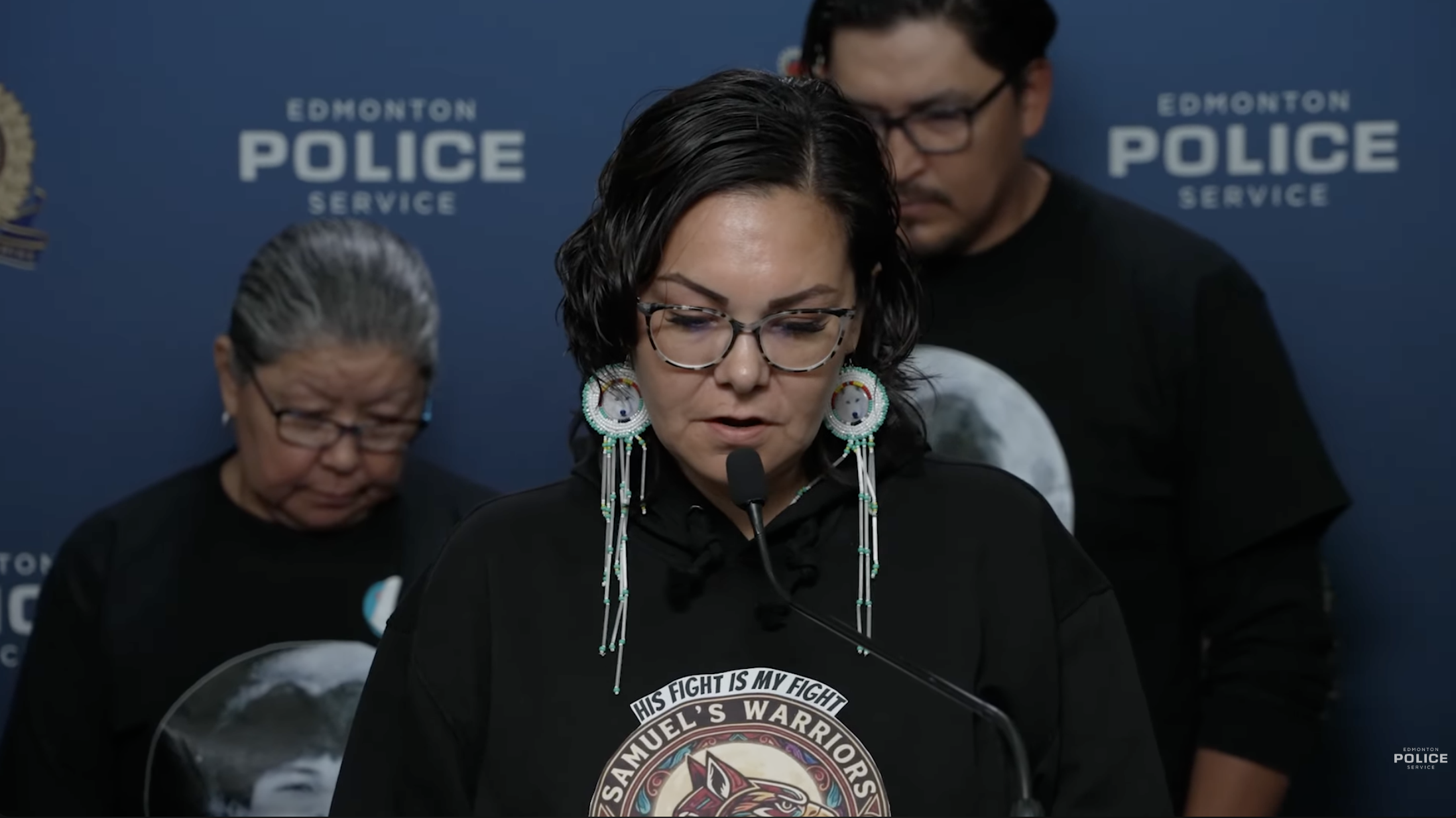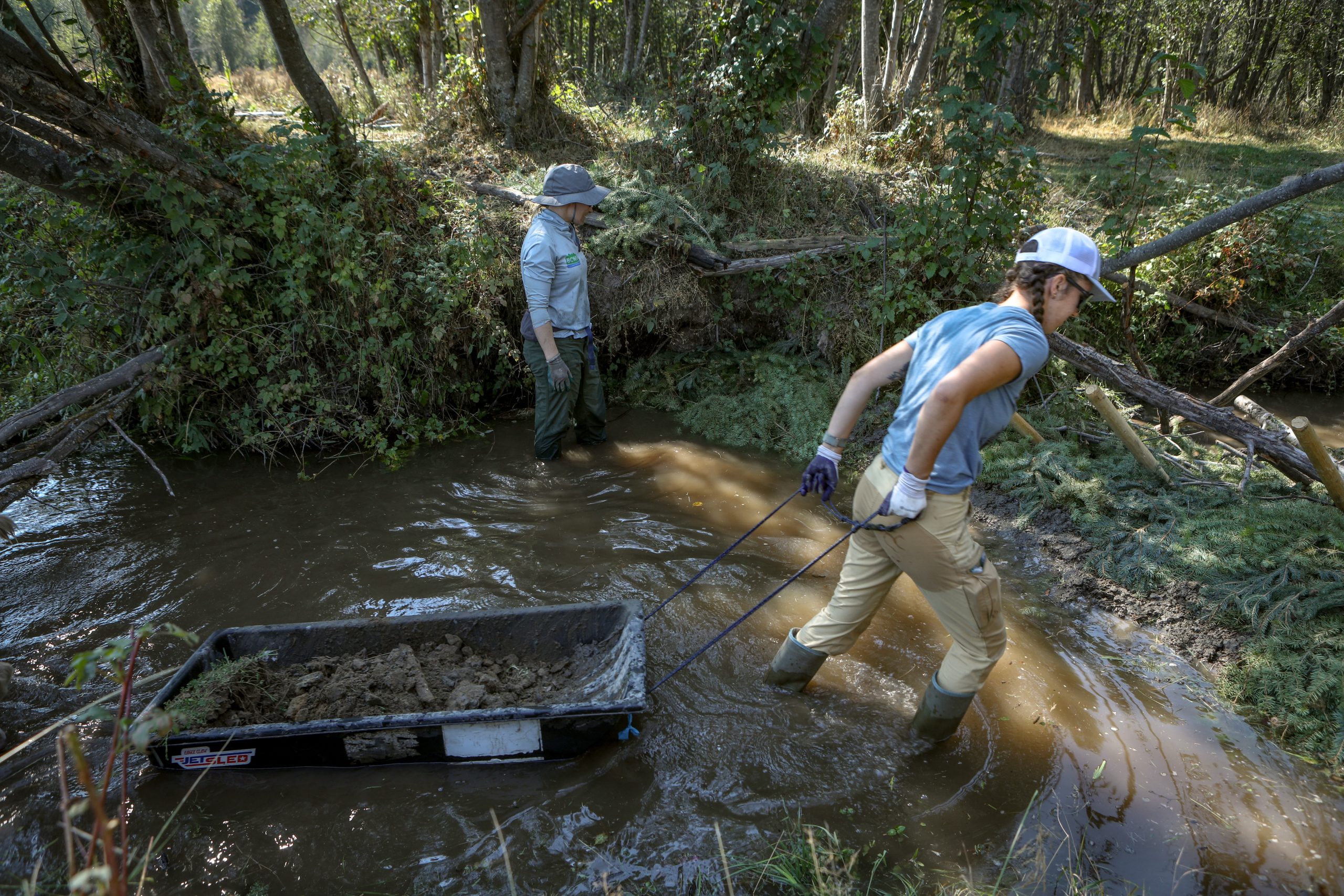On wheels or horseback, journey to the Williams Lake Stampede fosters unity: ‘Everybody comes together’
The 22nd annual Tŝilhqot’in ride to the Stampede was larger than ever — bringing communities together along the way

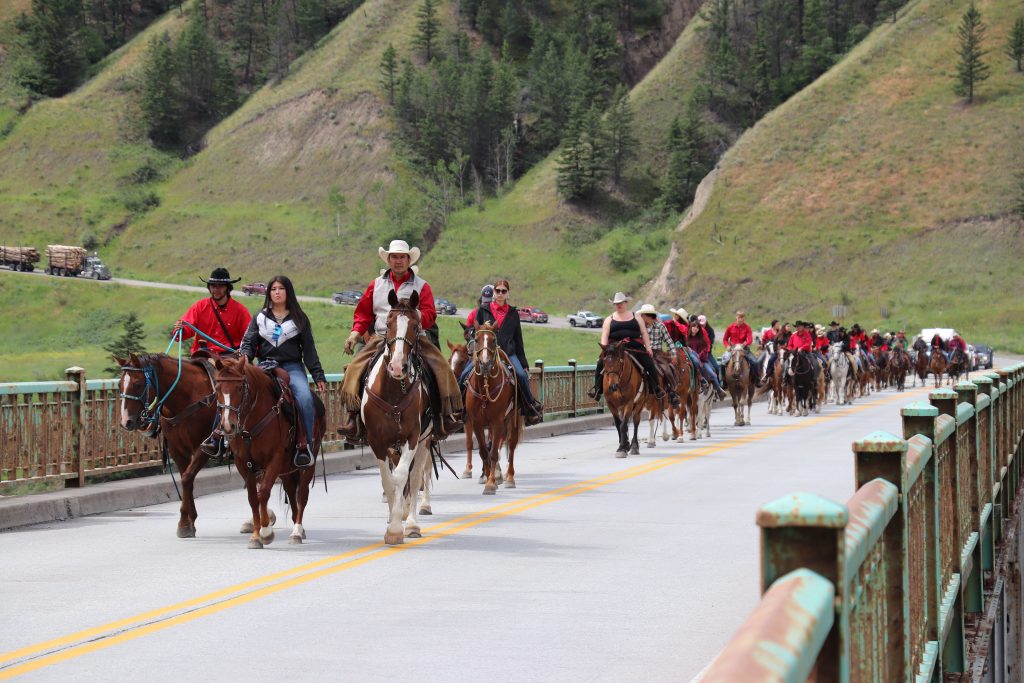
Niomi Quilt began participating in an annual horse, bike and wagon ride to the Williams Lake Stampede back in 2010.
“I saw them coming to town one year, and I fell in love with it,” says Quilt, who is from the Tŝilhqot’in Nation community of Yuneŝit’in.
“I asked my grandma every year if I could join … I was the first one for my community to join them, and back then it was just a three day ride.”
The annual Tŝilhqot’in Horse and Bike Ride to the Stampede has now been running for 22 years. The journey spans across the Tŝilhqot’in Nation and beyond — with people making the trip from their communities in order to make it to the Williams Lake Stampede.
The full journey spans more than 100 km for some. Elders from many communities surrounding Williams Lake speak of their childhood trips on horseback to the Stampede — and the now annual ride has brought back that experience for the next generations.
This year, the ride continued over six days between June 22 to 27 — with rest days scheduled including a day to gather and celebrate the anniversary of the Tŝilhqot’in Nation’s title land case win in the Supreme Court of Canada in 2014.
Quilt recalls when she first joined back in 2010, there were only 25 horseback riders and one biker. This year, she counted 89 bike riders and 82 horse riders on one leg of the ride, with many more on wagons and coming from other communities.
“It’s amazing to see it grow. Before, it was just adult based, but now we’re more focused on the Youth, and it’s grown ever since,” she says.
“And it’s amazing, I love seeing it.”
For this year’s event, Quilt brought her two sons on the ride with her and their dad.
With the ride not only involving horses and bikes but also wagons, her children had the opportunity to switch between horse and bike riding during the journey.

‘I never thought that I would have been a horse person’
For Quilt, seeing the Youth — including her own children — get to experience the journey is exciting.
“Growing up, my grandpa really wanted us to be into horses like I could ride before I could even walk, and being able to teach that to my kids, it’s amazing,” she says.
“Like, I didn’t have that teaching as a kid, we didn’t have horses until I was a teenager.”
Quilt adds that as a child her and her relatives used to just bring halters to ride the horses — she’s happy that now the children have a safe place to learn with many communities implementing horse programs.
One of the Youth who participated in this year’s ride was Lily Garland Isnardy, who has been involved with the horse program in her community of Tl’esqox since 2019.
Growing up in kiʔláwnaʔ (Kelowna), Garland Isnardy didn’t have much access to horses — she recalls how her family used to work with horses but they “slipped out of that life.”
“I never thought that I would have been a horse person,” she says.
“And then we moved back, and then reconnecting with our traditional ways as horse people is awesome, in my opinion.”
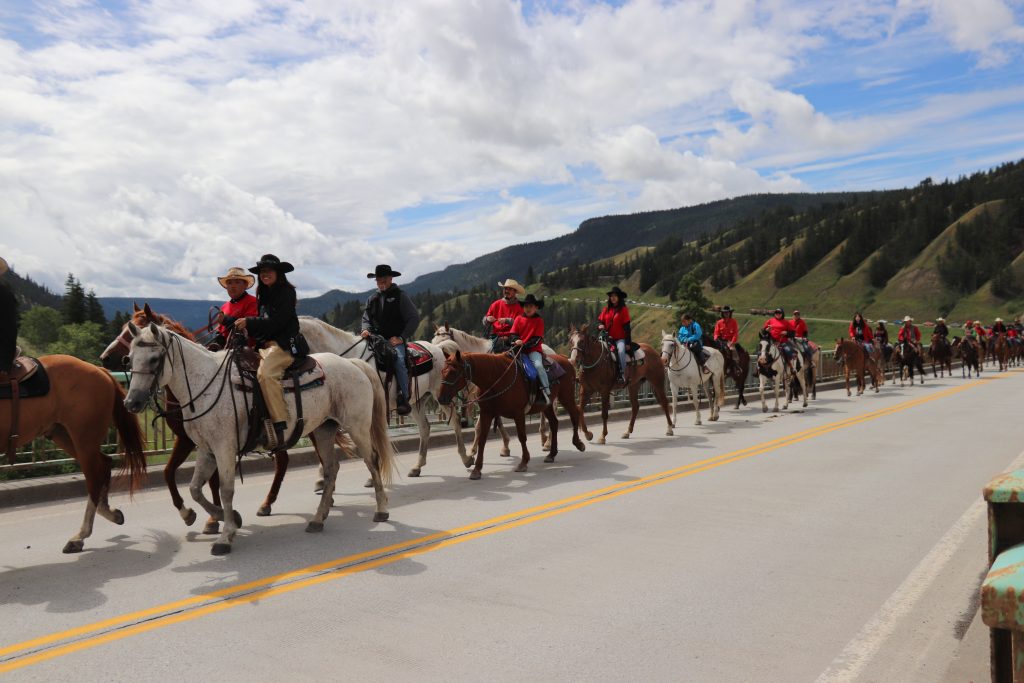
Garland Isnardy’s interest in the horse program came after her first ride to the Stampede in 2019 and she has since been involved with the horse program and annual rides where she has seen the growth firsthand.
“I was just going to school at the time, and then they were asking me if I wanted to start riding horses and I’d never been on a horse — or didn’t know anything about horses — and they just threw me on and told me how to go left and right,” she says.
That first ride changed the direction of her life as Garland Isnardy now works with the horse program in Tl’esqox and is surrounded by horses and riders including children who are enthusiastic and ready to learn each day.
“It was an awesome experience to just connect with the horse and I’ve never done anything like that before and now I’m doing that every day, and it’s my regular routine.”
She adds that the planning and evolving the trip can be stressful in terms of funding or volunteering but in the end it works out and comes together the way it needs to.
With riders of all ages participating in the journey, the horse programs are able to help the Youth and horses prepare for the long days.
“Our number of kids we have in our program are just growing and we don’t only have people from Tl’esqox, we have people from other reserves coming in, and they all love it,” she says.
“Everybody comes together, even the kids come to help clean and cook and everything.”
The programs ensure that all participants get used to the caretaking of the horses and they also take plenty of trail rides to work up to the six hour days of riding which strengthens the bond of the rider and the horse.
The connection between the people and their surroundings are also strengthened through the journey as they take time to rest and camp on the land each night.
“You wake up in the country, and it’s just awesome, to the sunrise and breakfast is made, and you saddle up, and then you hit the road again every day,” she says.
“It’s awesome to be connecting to the land. It’s very good for your mind, body and soul, I think.”
Even through all types of weather, she says everyone is still so committed to the journey. This year they encountered rainy days and continued on without much complaints and “everybody was just toughing it out.”
“I really liked it when it rained and everybody … stayed on their horses, they kept going,” she says with a smile.
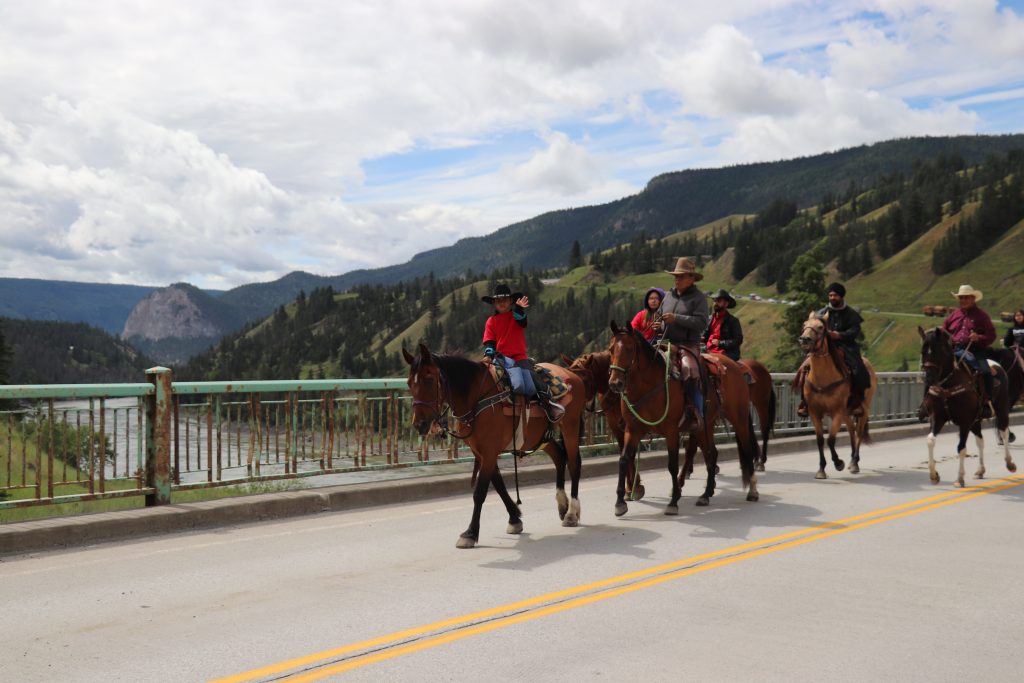
Garland Isnardy noted how the ride brings everyone together and broadens the connections among communities.
“It means just coming together as a nation, it’s very uniting,” she says.
“It’s just very empowering to see us all come together.”
The long days in a journey together fosters the connection as they bond over the journey and their experiences.
“It’s just awesome, like, on the horse, you’re just talking with other people and getting to know everybody on other reserves and camping together, eating together.”
For the younger generations, that connection and unity shown amongst the ride is notable.
“it’s great for the kids and the Youth to socialize like that, especially after COVID-19,” she says.
Quilt agreed — saying so many of the riders are related to one another, and the journey allows them space to connect.
“So talking with them and setting those connections, especially introducing them to my sons, because we don’t get out very much, but it’s amazing,” she says.
“We even have a handful of riders who come from Merritt, and then we have some from Sugarcane, and then it’s just amazing to see the connections that kids have with every one of them, with their horses and learning as they go.”

Preparation for the journey
Preparation for the rides begins many months before they leave their communities in June.
Quilt says they begin going through their supplies from the previous years and planning their shopping in January. During this time, even menus to decide on food and drinks are planned to ensure everything is accounted for.
The changes from her first year in the ride in 2010 are drastic, and inspiring, for Quilt as she recalls having her dad and grandma shop before they started the journey and then travelling behind the group to give them food each night at the camp.
“They followed us, just that first year from starting. Yeah, now, seeing the difference, it’s amazing,” she says.
It’s still a lot to get ready for, especially with the growing number of riders, but each year they learn more and are evolving along with the rides.
“It’s a long preparation, even having to plan to get the shirts ahead of time, because all the riders get shirts, whether it be Western or the long sleeve or the short sleeves because this year we all wore red,” she says.
With the majority of the ride occurring on trails and roads that have no cell phone service, even the communication needs to be planned out in advance.
Quilt notes that it is sometimes difficult but they are all trying their best and hoping to keep it organized.
“We have walkie talkies, and we have it set for different stations,” she says, noting that there were separate channels for bikers and horse riders to keep a little bit of order.
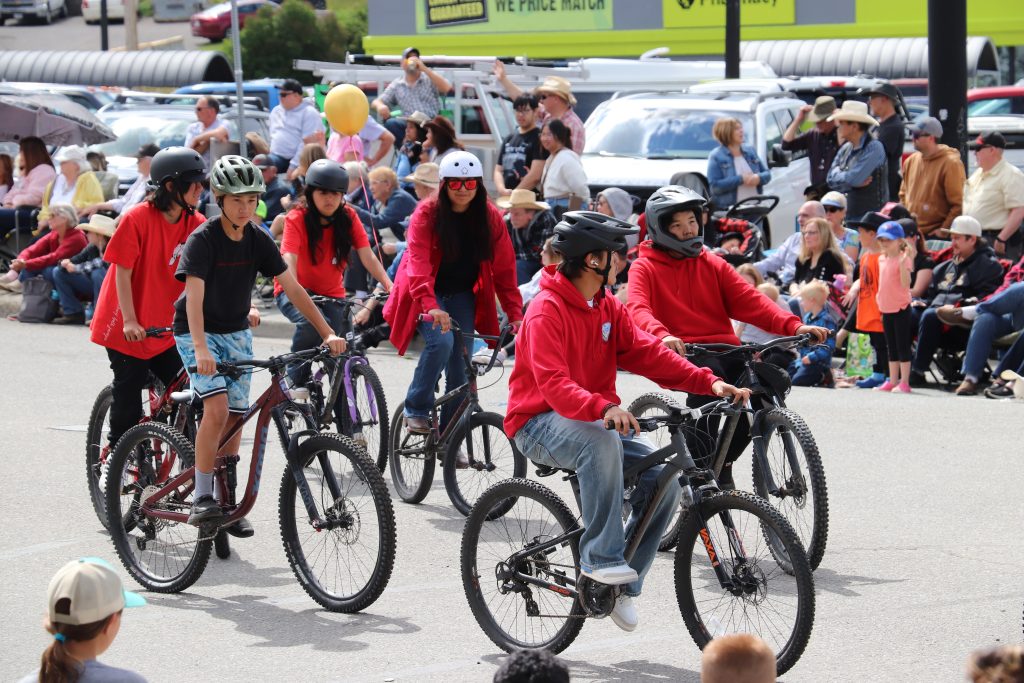
With the growth of the annual ride, the main issue with putting together an event of this magnitude is the funding. Both Quilt and Garland Isnardy note that funding is always a stressor, but they have been lucky to make the ride work each year.
“We started [meetings for the ride] in March this year because we weren’t sure if we had the funding for it because a lot of us, we were struggling with finding funding,” Quilt says.
In the end they managed to make this year a successful ride, with some bumps along the way, but the people managed to come together to celebrate and continue the traditions.
Each year, Garland Isnardy hears from the younger kids that they’re excited to return for the next year.
“You wouldn’t expect them to love it as much as you thought they would, you think they would like it, but they love it — like it’s in their blood,” she says.
“You can tell, it helps a lot of the children, and not only just the children, the adults and the Elders.”
Author
Latest Stories
-
‘Bring her home’: How Buffalo Woman was identified as Ashlee Shingoose
The Anishininew mother as been missing since 2022 — now, her family is one step closer to bringing her home as the Province of Manitoba vows to search for her
-
Samuel Bird’s remains found outside ‘Edmonton,’ man charged with murder
Officers say Bryan Farrell, 38, has been charged with second-degree murder and interfering with a body in relation to the teen’s death
-
Book remembers ‘fighting spirit’ of Gino Odjick, hockey’s ‘Algonquin Assassin’
Biography of late Kitigan Zibi Anishinabeg left winger explores Odjick’s legacy as enforcer in the rink — and Youth role model off the ice



